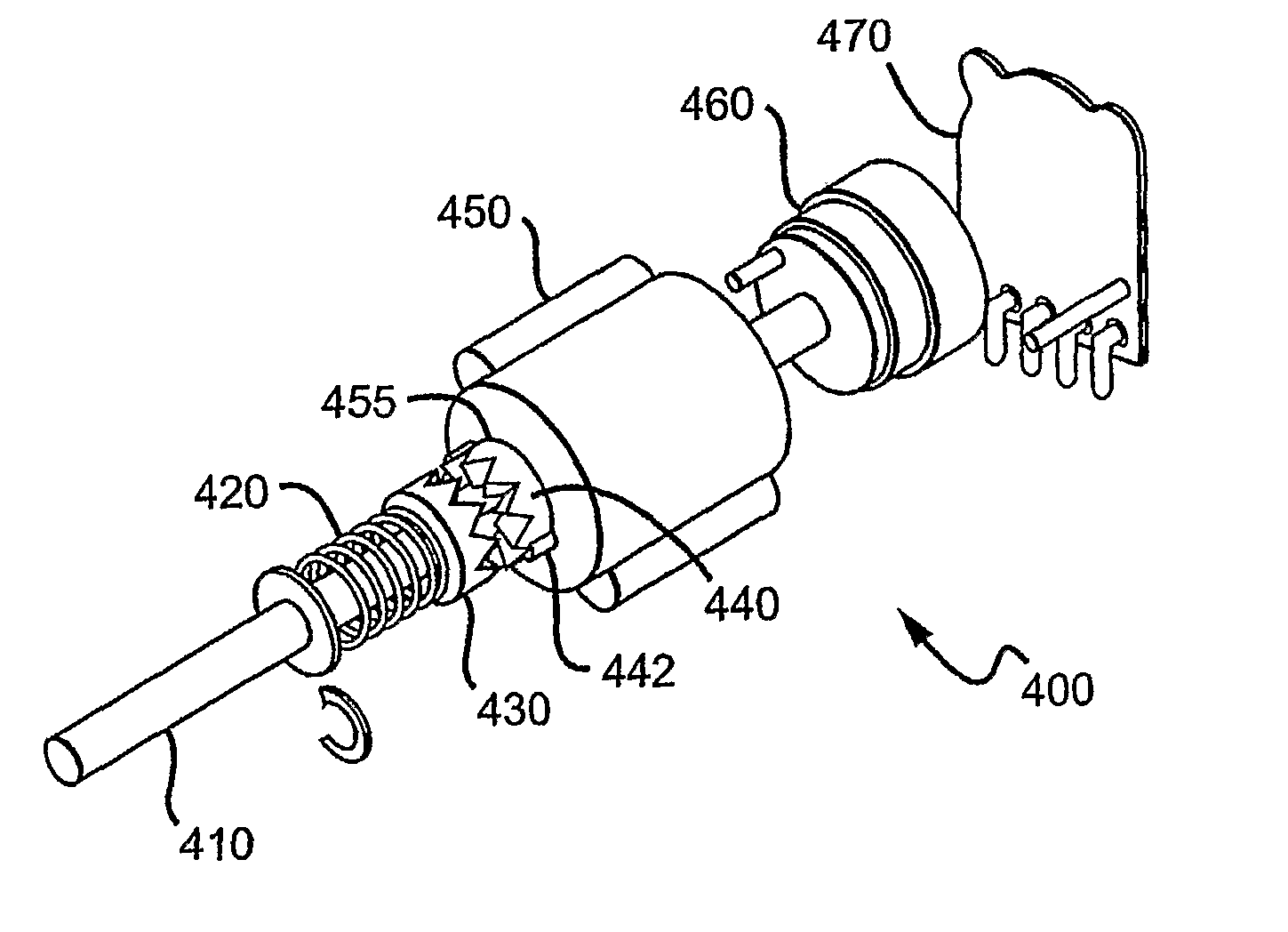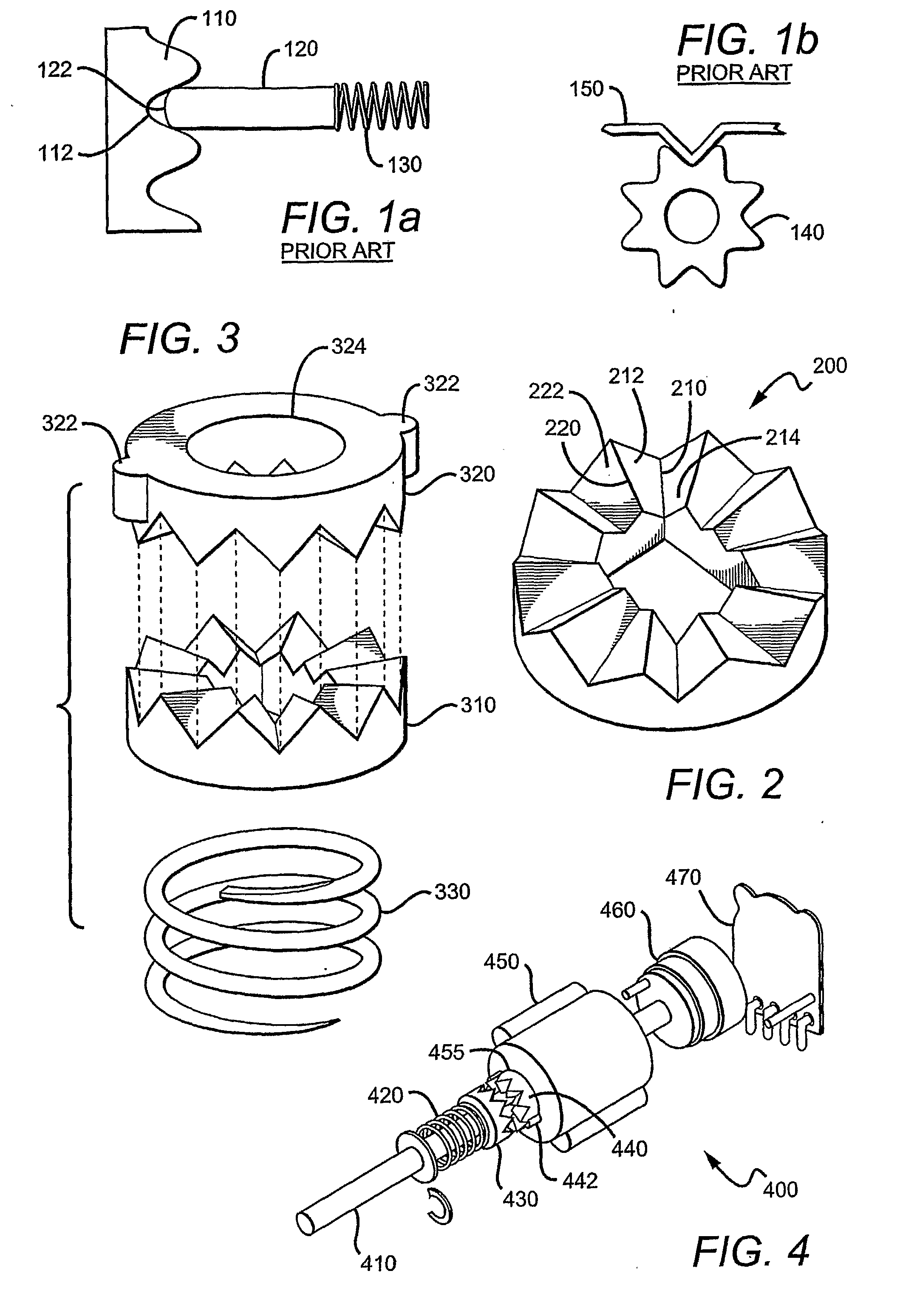Rotary Circuit Selection Device with Crown Detent
a selection device and circuit technology, applied in the field of electromechanical switches, can solve the problems of excessive play in the switch, the cam and the cam follower being worn, and the follower being dependent on the follower, so as to reduce the play over time
- Summary
- Abstract
- Description
- Claims
- Application Information
AI Technical Summary
Benefits of technology
Problems solved by technology
Method used
Image
Examples
Embodiment Construction
[0014]FIGS. 1a and 1b are examples prior art detent mechanisms. The detent mechanism of FIG. 1a comprises a cam 110, a cam follower 120, and a spring 130. In operation, cam follower 120 will follow the contour of cam 110 as the cam is rotated. It should be recognized that the cam follower will cause wear in the peaks and valleys of the cam as it moves over those areas. Additionally, it can be observed that the tip of the cam follower 122 will not contact the valley 112 until substantial wear has occurred. Wear causes relatively more play in a detent mechanism, however, causing it to become less accurate over time and eventually making it unsuitable for its intended purpose.
[0015]FIG. 1b is an alternative prior art detent having a cam 140 and a cam follower 150. Here, the cam follower 150 follows the outside contour of the cam 140 as the cam rotates. Again, however, wear will cause additional play in the switch rendering it less accurate over time.
[0016]FIG. 2 is an annular cam 200...
PUM
 Login to View More
Login to View More Abstract
Description
Claims
Application Information
 Login to View More
Login to View More - R&D
- Intellectual Property
- Life Sciences
- Materials
- Tech Scout
- Unparalleled Data Quality
- Higher Quality Content
- 60% Fewer Hallucinations
Browse by: Latest US Patents, China's latest patents, Technical Efficacy Thesaurus, Application Domain, Technology Topic, Popular Technical Reports.
© 2025 PatSnap. All rights reserved.Legal|Privacy policy|Modern Slavery Act Transparency Statement|Sitemap|About US| Contact US: help@patsnap.com


